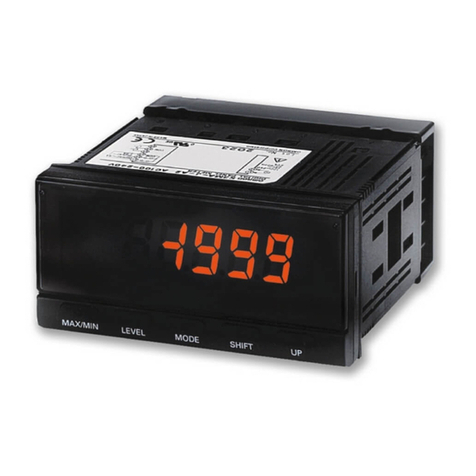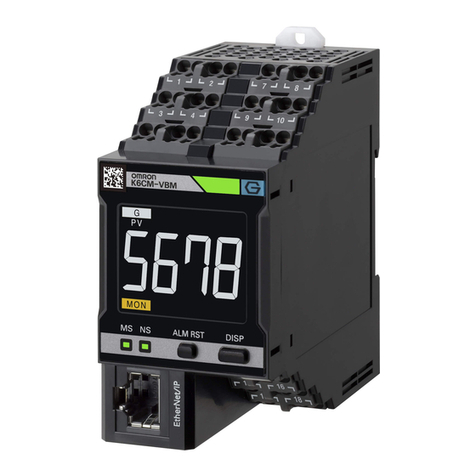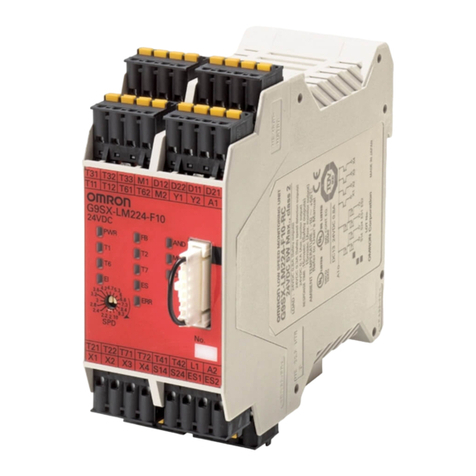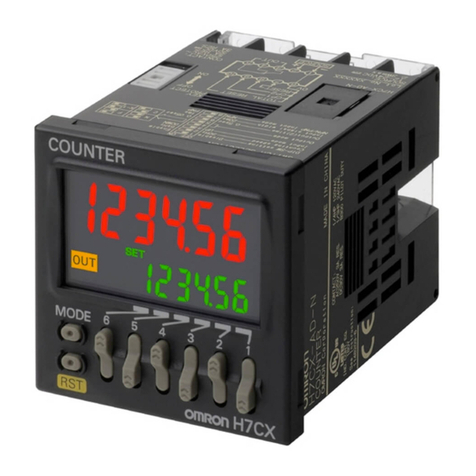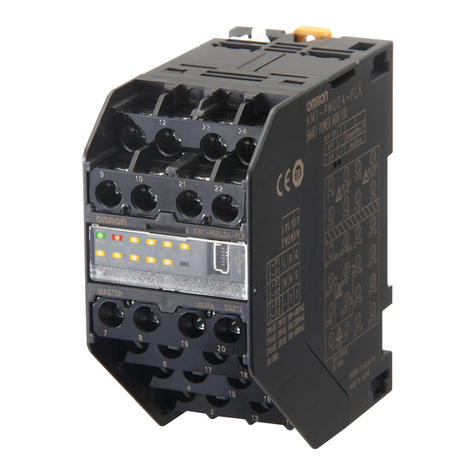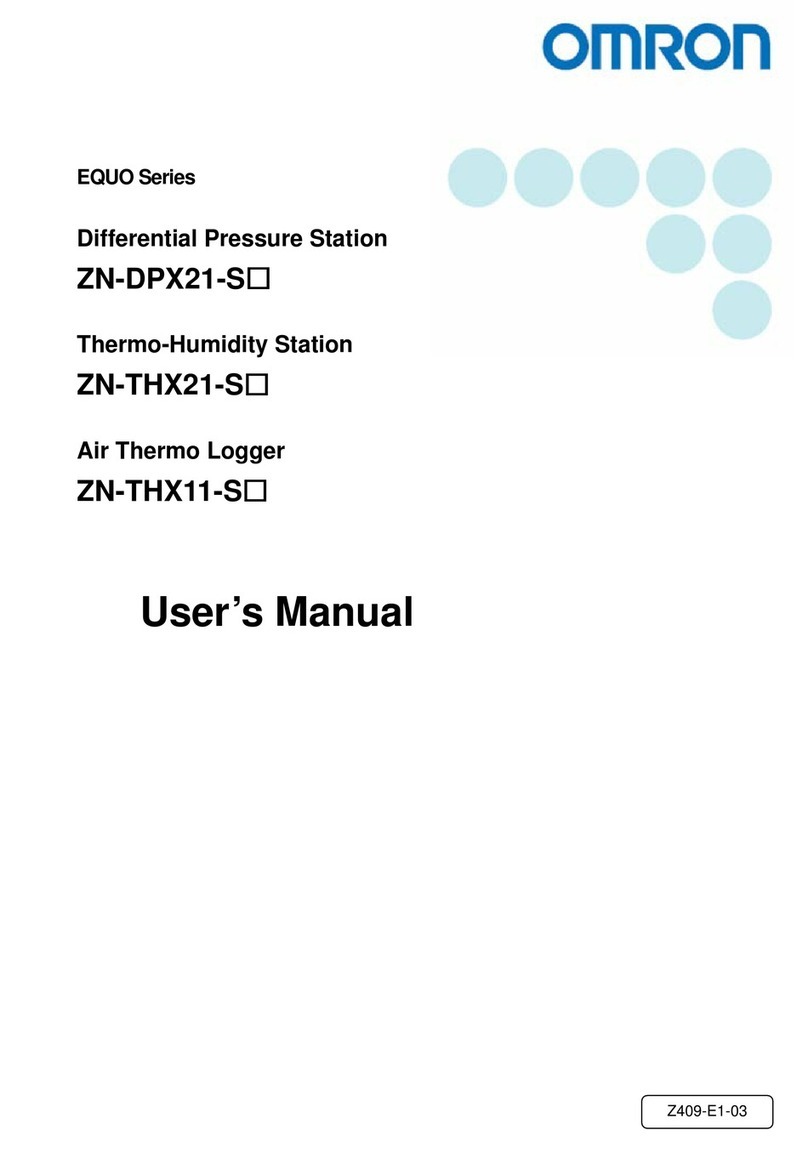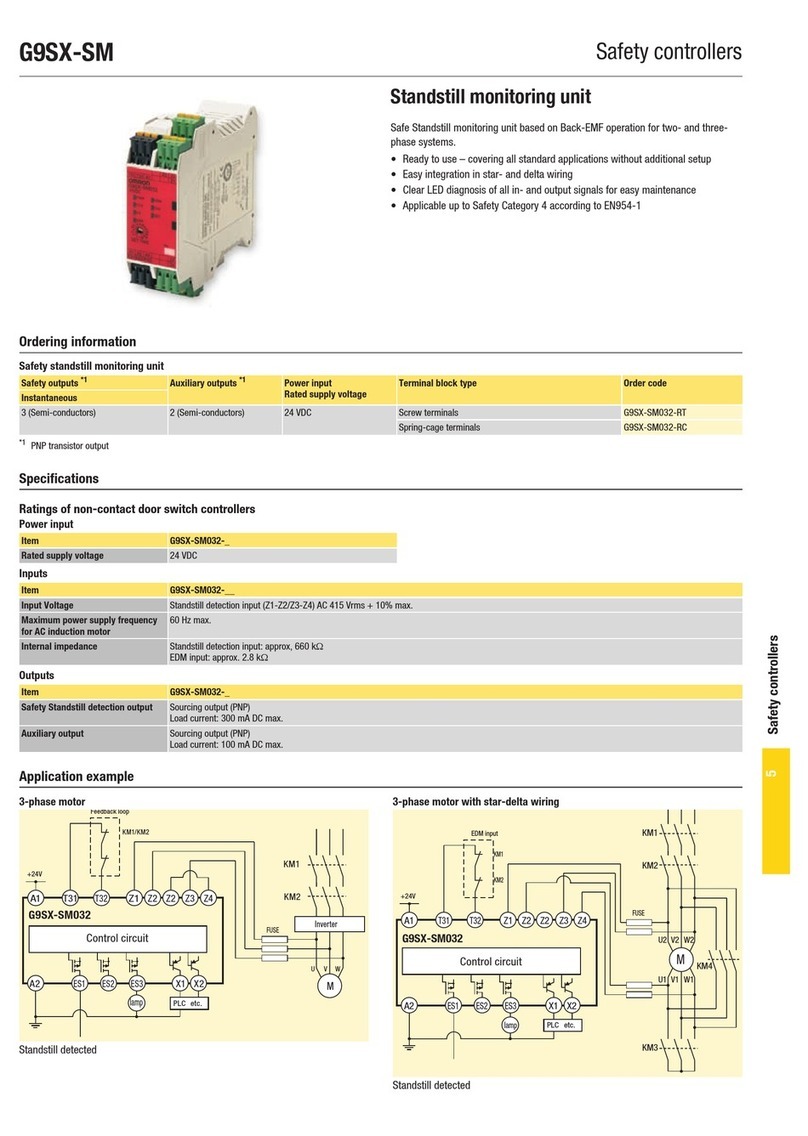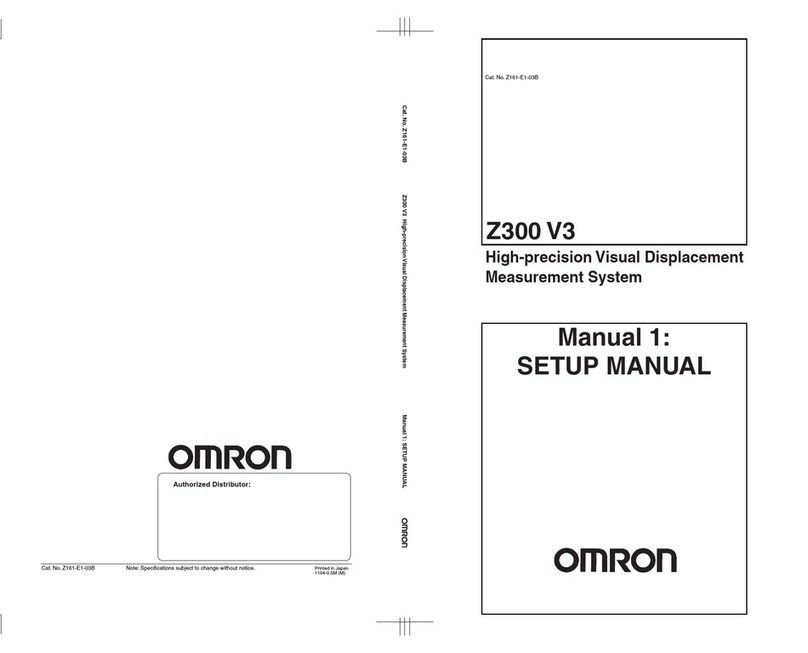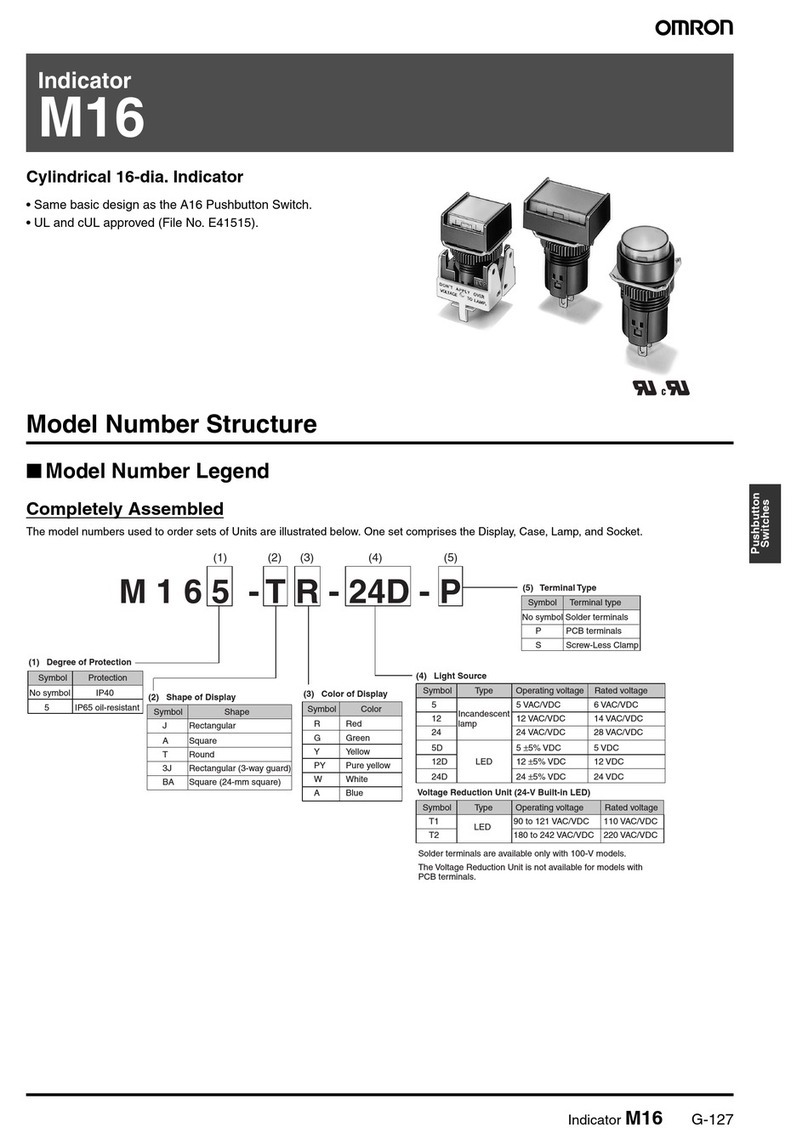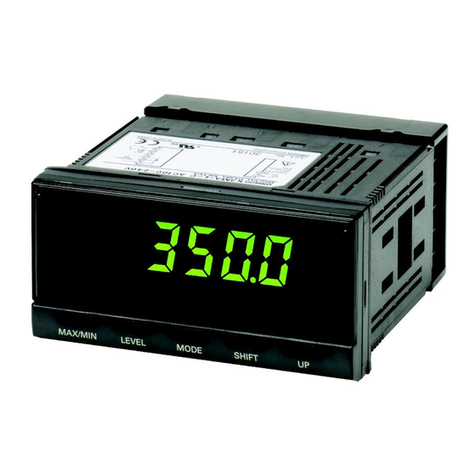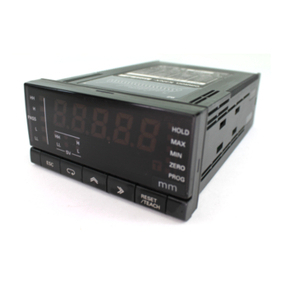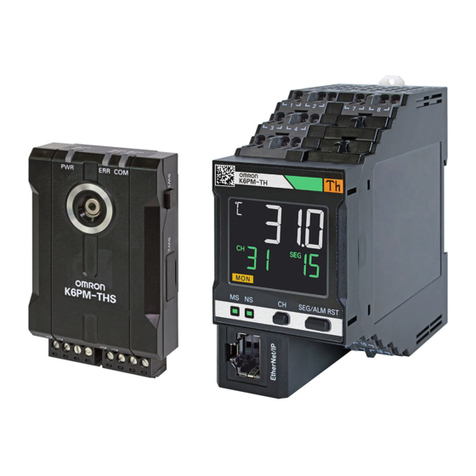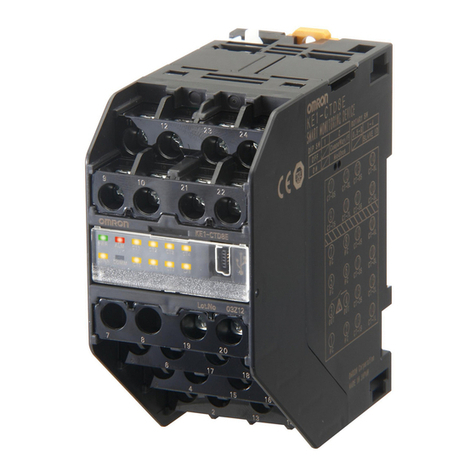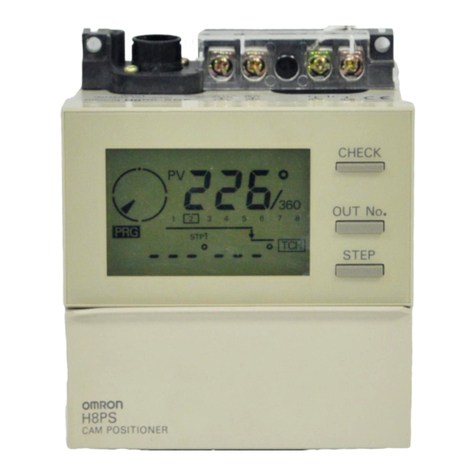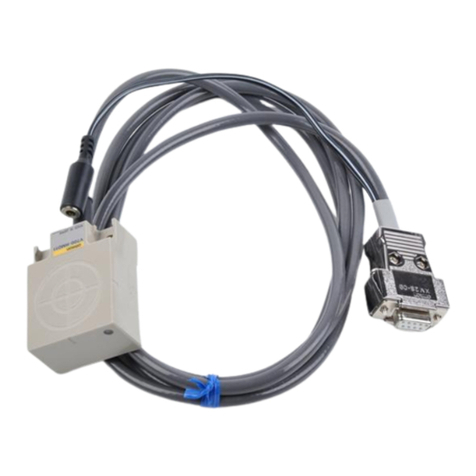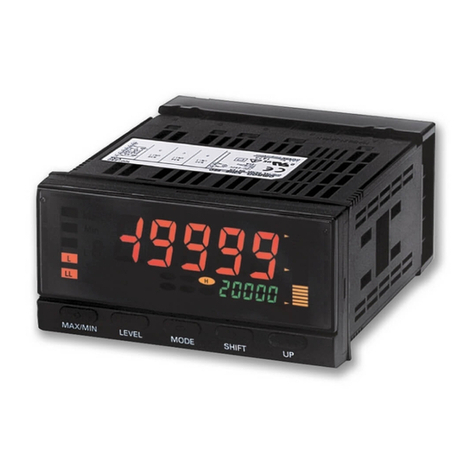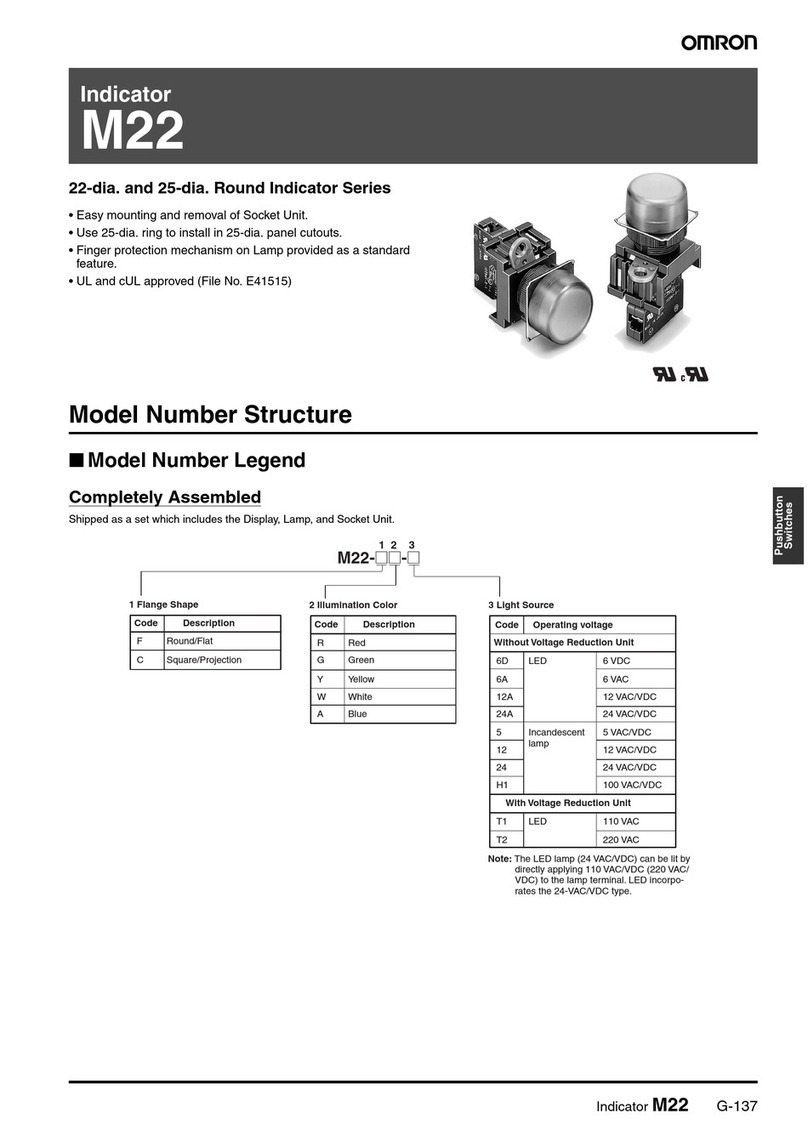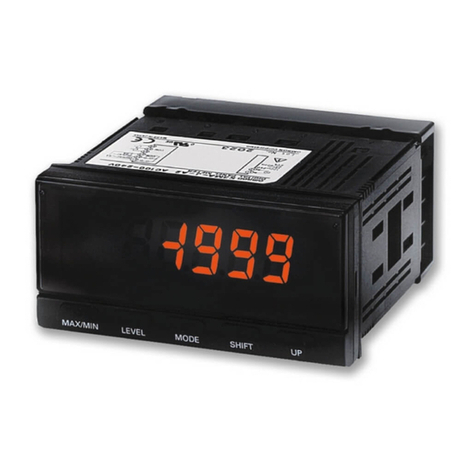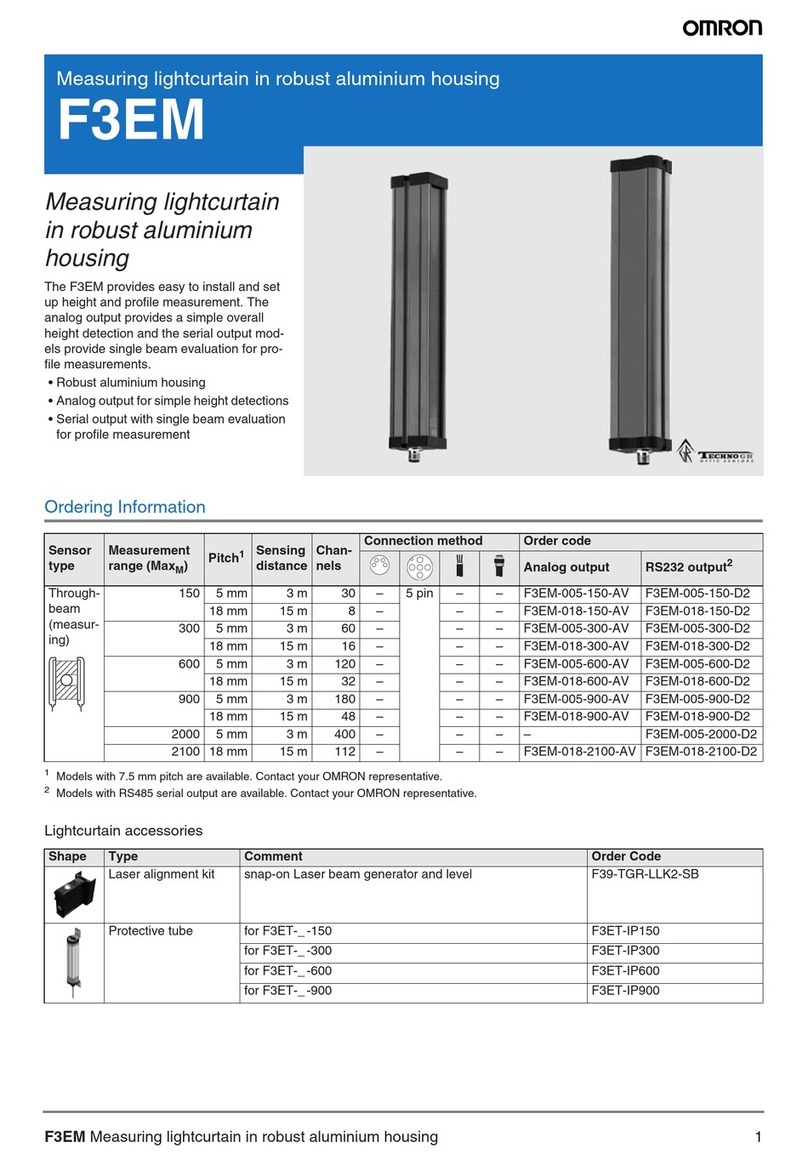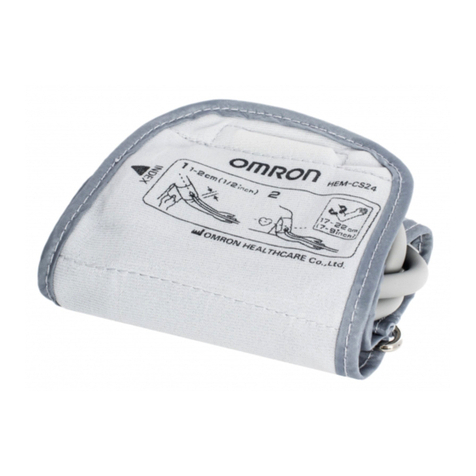
II
Other Informations
1 Warranty
(1) Warranty Period
The warranty period for an OMRON Product is one year from either the date of purchase or the date on which the
OMRON Product is delivered to the specified location.
(2) Extent of Warranty
If an OMRON Product is subject to a failure for which OMRON is responsible during the warranty period, either a
replacement product will be provided or the defective product will be repaired free of charge at the place of
purchase, This warranty, however, will not cover problems that occur as a result of any of the following.
a) Using the OMRON Product under conditions or in an environment not described in catalogs or in the
specifications, or not operating the OMRON Product according to the instructions contained in catalogs or
in the specifications.
b) Problems caused by something other than the OMRON Product.
c) Modifications or repairs performed by a party other than OMRON.
d) Using the OMRON Product for other than its designed purpose.
e) Problems that could not have been foreseen with the level of science and technology that existed at the time
the OMRON Product was shipped.
f) Problems caused by an Act of God or other circumstances for which OMRON is not responsible.
This warranty covers only the OMRON Product itself. It does not cover any other damages that may occur
directly as a result of a problem with the OMRON Product.
2 Limitations of Liability
(1) OMRON shall not be responsible for special, indirect, or consequential damages originating in an OMRON
Product.
(2) For programmable OMRON Products, OMRON does not accept responsibility for any programming that is
performed by a party than OMRON, or for any results arising from that programming.
3 Applicable Conditions
(1) When using OMRON Products in combination with other products, it is use’s responsibility to confirm
the suitability of the OMRON Products for the system, devices, and equipment that are being used. OMRON
accepts no responsibility for the suitability of OMRON Products used in combination with other products.
(2) When using OMRON Products in any of the following applications, consult an OMRON representative and check
specifications to allow sufficient leeway in ratings and performance, and to implement suitable safety measures,
such as safety circuits, to minimize danger in the event of an accident.
a) Outdoor applications, applications with potential for chemical contamination or electrical interference, or
application under conditions or environments not described in catalogs.
b) Nuclear control systems, railroad systems, aviation systems, vehicles, combustion systems, medical equipment,
amusement machines, or equipment regulated by government or Industrial standards.
c) Other systems, machines, and equipment that may have a serious influence on human life and property.
d) Equipment requiring a high level of reliability, such as gas, water, or electrical supply systems, and systems that
operate 24 hours a day.
e) Other applications requiring a high level of safety, corresponding to points a) to d), above.
(3) When OMRON Products are used in an application that could pose significant risk to human life or property, the
overall system must be designed so that the required safety can be ensured by providing notice of the danger and
incorporating redundancy into the design. Make sure that OMRON Products are appropriately wired and mounted to
serve their intended purpose in the overall system.
(4)Applicationexamplesprovided in catalogs are for reference only. Confirm functionality and safety before actually
using the devices and equipment.
(5) To prevent unexpected problems from arising due to the OMRON Product being used incorrectly by the customer
or any other party, make sure that you understand and carefully observe all of the relevant prohibitions and
precautions.
4 Changes to Specifications
Specifications and accessories to the products in catalogs may be changed as needed to improve the products or for any
other reason. Check with your OMRON representative for the actual specifications for OMRON Products at the time
of purchase.
5 Applicability
The above information assumes that business and product application will be conducted in Japan. For business and
application outside of Japan, consult with your OMRON representative.
